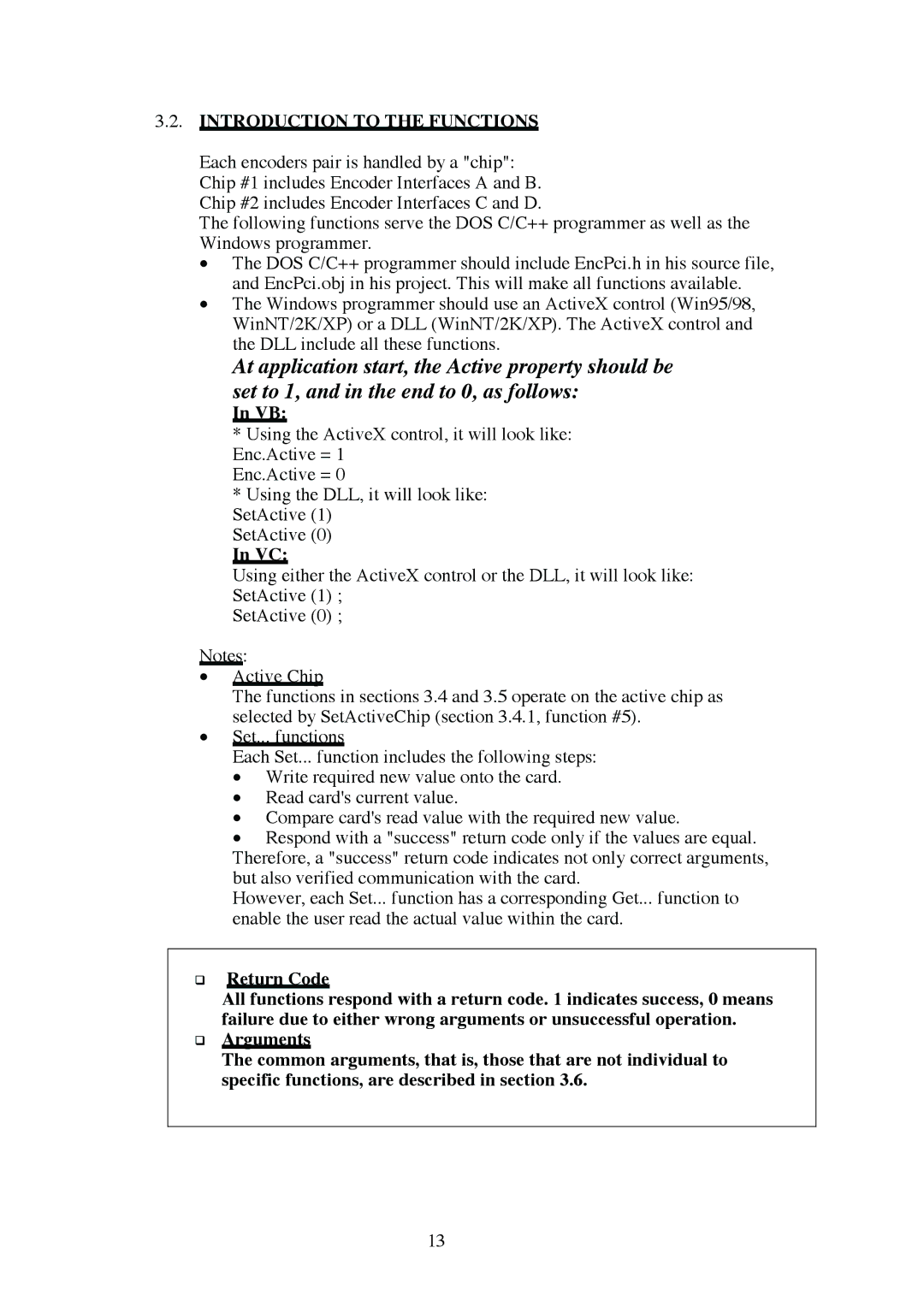
3.2.INTRODUCTION TO THE FUNCTIONS
Each encoders pair is handled by a "chip": Chip #1 includes Encoder Interfaces A and B. Chip #2 includes Encoder Interfaces C and D.
The following functions serve the DOS C/C++ programmer as well as the Windows programmer.
•The DOS C/C++ programmer should include EncPci.h in his source file, and EncPci.obj in his project. This will make all functions available.
•The Windows programmer should use an ActiveX control (Win95/98, WinNT/2K/XP) or a DLL (WinNT/2K/XP). The ActiveX control and the DLL include all these functions.
At application start, the Active property should be set to 1, and in the end to 0, as follows:
In VB:
*Using the ActiveX control, it will look like: Enc.Active = 1
Enc.Active = 0
*Using the DLL, it will look like:
SetActive (1)
SetActive (0)
In VC:
Using either the ActiveX control or the DLL, it will look like:
SetActive (1) ;
SetActive (0) ;
Notes:
•Active Chip
The functions in sections 3.4 and 3.5 operate on the active chip as selected by SetActiveChip (section 3.4.1, function #5).
•Set... functions
Each Set... function includes the following steps:
•Write required new value onto the card.
•Read card's current value.
•Compare card's read value with the required new value.
•Respond with a "success" return code only if the values are equal. Therefore, a "success" return code indicates not only correct arguments, but also verified communication with the card.
However, each Set... function has a corresponding Get... function to enable the user read the actual value within the card.
Return Code
All functions respond with a return code. 1 indicates success, 0 means failure due to either wrong arguments or unsuccessful operation. Arguments
The common arguments, that is, those that are not individual to specific functions, are described in section 3.6.
13
